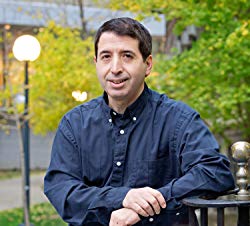Sir Isaac Newton In 1666, while the University of Cambridge in England was closed due to a plague, Newton retreated to his family’s estate in Lincolnshire. There, the sight of an apple falling to the ground is said to have inspired the 23-year-old physicist and mathematician to develop his theory of universal gravitation. Newton later said that at the time, he was “in the prime of my age for invention.”
Friedrich August Kekulé von Stradonitz The ring-like structure of the benzene molecule came to Kekulé von Stradonitz in 1864 when, at the age of 35, he dreamt of odd shapes and movements – and snakes. He later recounted the dream: “But look! What was that? One of the snakes had seized hold of its own tail, and the form whirled mockingly before my eyes. Then, as if by a flash of lightning I awoke.” It remains chemistry’s most famous aha moment.
Albert Einstein In 1907, at age 28, Einstein was working in the patent office in Bern, Switzerland, when, by his own account, a “breakthrough came suddenly one day.” Instead of keeping his mind on his work, his thoughts wandered to, “If a man falls freely he would not feel his weight.” Einstein’s response to his thought was immediate: “I was taken aback. This simple thought experiment made a deep impression on me.” By linking accelerated motion and gravity, Einstein eventually created his masterwork, the general theory of relativity. However, it took him eight years to work through the mathematical details.
Jules-Henri Poincaré In a famous essay titled “Mathematical Creation,” the mathematician Poincaré recalled an aha moment involving a particular kind of mathematical construct known as “Fuchsian functions.” For two weeks he struggled to prove a particular property of these functions, but writes that he “tried a great number of combinations and reached no results.” A few days later he left his home in Caen, France, to join some colleagues on a geological excursion to Coutances, where he recalls boarding an omnibus. “At the moment when I put my foot on the step the idea came to me, without anything in my former thoughts seeming to have paved the way for it,” he wrote. “On my return to Caen, for conscience’s sake I verified the result at my leisure.” Poincaré was not yet 30.
Sir Paul McCartney The tune for McCartney’s most successful song came to him fully developed in 1964. “I woke up one morning with a tune in my head and thought, ‘Hey, I don’t know this tune – or do I?'”
Friends and colleagues eventually convinced the 21-year-old Beatle that the tune wasn’t a known jazz melody, as he suspected. It was something new. In The Beatles Anthology, McCartney reveals that for several weeks the working title was “Scrambled Eggs.” The lyrics: “Scrambled eggs, oh, my baby, how I love your legs – diddle diddle – I believe in scrambled eggs.” With its new title, “Yesterday,” and much-improved lyrics, it has become the most-recorded song in history.







No Responses to “ Great Eureka Moments in History ”
You forgot the most famous of all Eureka moments. The one by a man by the name of Archimedes.
There is hope for all of us to have that "aha moment." I love the the history on Paul McCartney and "Yesterday." Thanks to writer Dan Falk for all his research on this article.
Interesting read. I was cramming for a psychology exam and searched for information about "eureka moments." Thanks for giving me a couple of examples I can use. Now I have to pray it will be a question on the exam.